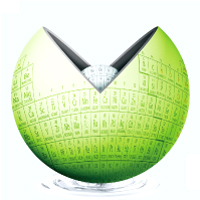
Published for geochemistry community from Geochemical Society of Japan.
Experimental study on tin partition between granitic silicate melt and coexisting aqueous fluid
Geochemical Journal, Vol. 42, No. 2, P. 141-150, 2008
ABSTRACT
The distribution of tin between different granitic silicate melts and coexisting aqueous fluids have been determined at 850°C, 100 MPa and fO2 near NNO. Tin distribution coefficients DSnaq.fl./melt are constrained by the composition of melt. When the starting fluid is 0.1 M HCl, DSnaq.fl./melt decreases rapidly from 0.130 ± 0.090∼0.137 ± 0.016 to 4.22 (±0.47) × 10-3 with the Na2O + K2O mole content and ASI of melt varying from 6.55 to 9.39% and 1.37 to 0.66, respectively, and tin concentrations in aqueous fluids and DSnaq.fl./melt decrease from 9.26 ± 0.56 to 0.220 ± 0.013 μg/g and 3.70 (±0.42) × 10-2 to 1.29 (±0.15) × 10-3, respectively with Na/K mole ratio increasing from 0.43 to 1.57 and nearly constant ASI from 1.04 to 1.10. A series of experiments that use the same K-rich peraluminous haplogranitic melt as starting solid whereas investigate the effects of chlorine and fluorine, the presence of chlorine in aqueous fluids increases DSnaq.fl./melt because of tin complexing, the presence of fluorine in the starting fluid does not significantly influence on DSnaq.fl./melt. For the chlorine experiments, DSnaq.fl./melt shows a positive dependence on the concentration of HCl in the starting fluid with log DSnaq.fl./melt = 2.0247 × log[HCl] + 0.6717 ([HCl] unit is M), and SnCl2 is the dominant tin-bearing complex in aqueous fluid. The results of this experiment showed that the peralkalinity of granitic melt and F-bearing in granite can lead to the enrichment of tin in melt phase, and, therefore, they probably serve as a tin ore reservoir or an important transport medium for tin ore formation, whereas K-rich peraluminous granitic melt and high HCl concentrations in the aqueous fluid phase are favorable for tin partitioning in aqueous fluid.KEYWORDS
experimental study, tin partition, granitic silicate melt, aqueous fluid- Published : 2008-04-20
- Released on J-STAGE : -
- Received : 2007/06/12
- Accepted : 2007/09/24
- DOI : https://doi.org/10.2343/geochemj.42.141
- J-STAGE URL : https://www.jstage.jst.go.jp/article/geochemj/42/2/42_2_141/_article/-char/ja
- J-Online ISSN: 1880-5973
- Print ISSN : 0016-7002
- ISSN-L : 0016-7002
All Issues
- Vol.59, 2025
- Vol.58, 2024
- Vol.57, 2023
- Vol.56, 2022
- Vol.55, 2021
- Vol.54, 2020
- Vol.53, 2019
- Vol.52, 2018
- Vol.51, 2017
- Vol.50, 2016
- Vol.49, 2015
- Vol.48, 2014
- Vol.47, 2013
- Vol.46, 2012
- Vol.45, 2011
- Vol.44, 2010
- Vol.43, 2009
- Vol.42, 2008
- Vol.41, 2007
- Vol.40, 2006
- Vol.39, 2005
- Vol.38, 2004
- Vol.37, 2003
- Vol.36, 2002
- Vol.35, 2001
- Vol.34, 2000
- Vol.33, 1999
- Vol.32, 1998
- Vol.31, 1997
- Vol.30, 1996
- Vol.29, 1995
- Vol.28, 1994
- Vol.27, 1993
- Vol.26, 1992
- Vol.25, 1991
- Vol.24, 1990
- Vol.23, 1989
- Vol.22, 1988
- Vol.21, 1987
- Vol.20, 1986
- Vol.19, 1985-1986
- Vol.18, 1984
- Vol.17, 1983
- Vol.16, 1982
- Vol.15, 1981
- Vol.14, 1980
- Vol.13, 1979
- Vol.12, 1978
- Vol.11, 1977
- Vol.10, 1976
- Vol.9, 1975
- Vol.8, 1974
- Vol.7, 1973
- Vol.6, 1972-1973
- Vol.5, 1971
- Vol.4, 1970-1971
- Vol.3, 1969-1970
- Vol.2, 1968
- Vol.1, 1966-1967
Current Issue:
Stats:
Impact Factor: 1.6 (2024)
Submission to final decision: 9.6 weeks (2022)




